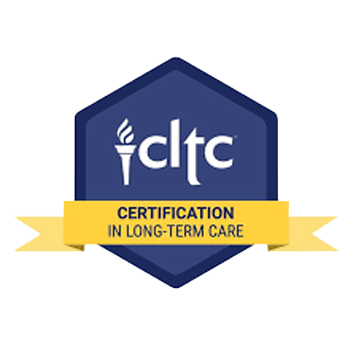Some industry pundits no longer refer to long-term care insurance (LTCI) as a risk management strategy but as an expense transfer strategy. Why? We’re living longer. The longer we live the greater likelihood that our health will change and we will need some level of long-term care. Risk, costs and misconceptions are all frightening facts.
Misconception: Most people won’t need long-term care
Fact: The risk of experiencing a long-term care event is frightening. Consider that 70% of us aged 65 and older will experience a long-term care event in our remaining years. But more frightening is the cost of care. Look at the Cost of Long Term Care by State by Carescout to understand costs of care venues where you live.
Misconception: Long-term care insurance is only for older Americans
Fact: Today 76% of policies are sold to consumers between the ages of 45 and 64. Note that 43% of those receiving long-term care in our country today are working age adults between the ages of 18 and 64. The primary reason for their care is auto accidents. The need for long-term care can occur at any time.
Misconception: Medicare will pay for long-term care
Fact: If hospitalized for three nights and requiring skilled care daily Medicare will cover 100% of the cost of skilled nursing or a rehab hospital for 20 days. After 20 days, Medicare will cover a portion of the next 80 days, but the Medicare beneficiary must pay the daily copay which is $209.50 in 2025. Claims history indicates that Medicare pays for 22 days on average, primarily because beneficiaries don’t need medical care daily provided by medical professionals more than about 22 days.
Misconception: Disability insurance will pay for long-term care
Fact: This insurance is designed to replace about 66% of income during working years and is needed to pay for basic living expenses. It is not a long-term care funding option.
Misconception: Consumers think long-term care insurance is too expensive
Fact: Long-term care insurance has become pricey. Why? The risk is high and the cost is dear. And we’re living longer but not necessarily healthier which translates into more claims. And they last longer. But this insurance is highly customizable. Consumers determine what is an affordable premium for their financial circumstances. Coverage can be designed based on the premium budget consumers define. Even a small policy can offset a significant amount of expense.
Misconception: I’ll just self-insure
Fact: The term “self-insure” is a misnomer. And misleading. There is no such thing as self-insuring. One of the principles of modern insurance is pooling funds from the many to pay for the losses of the few. There is no “self” in insurance. Insurance involves the transfer of risk. It is a way to protect oneself from financial loss. In exchange for a fee, one party agrees to compensate another in the event of a loss. Without insurance, if one experiences a loss, that individual will fund the expense incurred. The correct term would be self-funding. But we don’t hear self-funding used often. Perhaps if it were, consumers might stop to think about what it really means. You have exposed your entire portfolio to pay for your care.
Misconception: I’m uninsurable
Fact: Many think that because they have had a heart attack or cancer that they are uninsurable. Could be. But underwriting guidelines are under constant review and change due to medical technology and improved treatment protocols. Even if uninsurable there are cost effective funding options to explore.
Misconception: I don’t need a plan
Fact: We all need a plan to pay for the cost of long-term care. Learn more in our FREE Guide to Planning for Long-Term Care or Contact Us today to explore your options.




